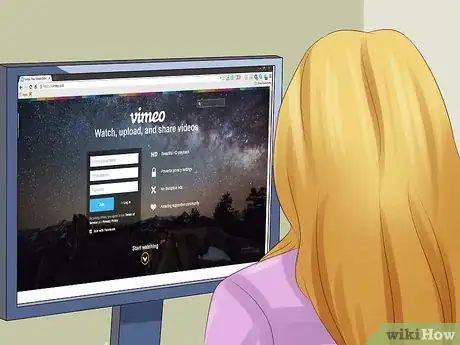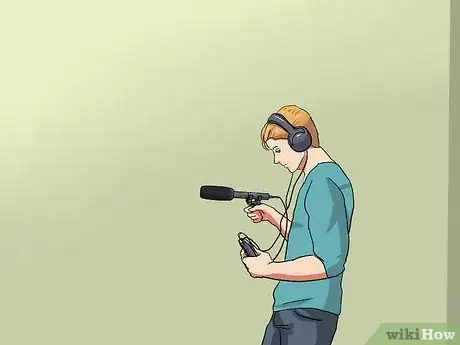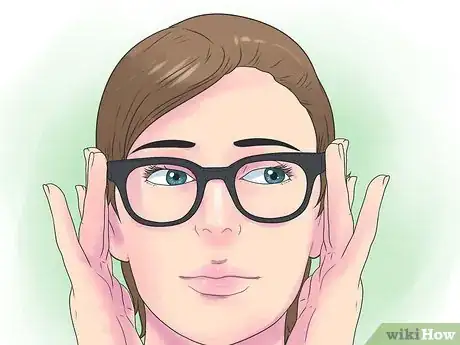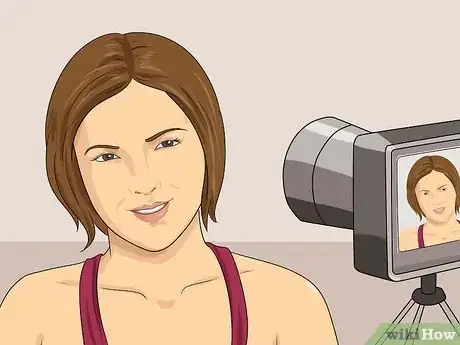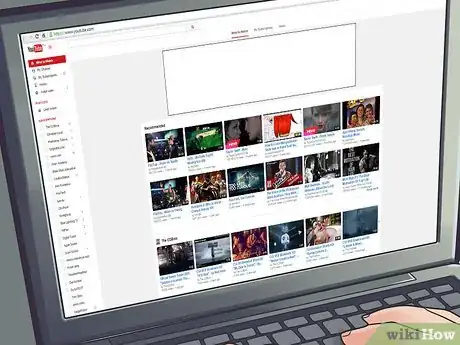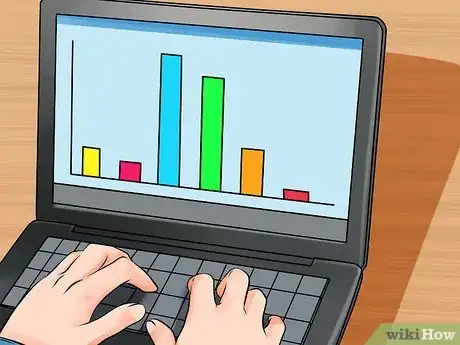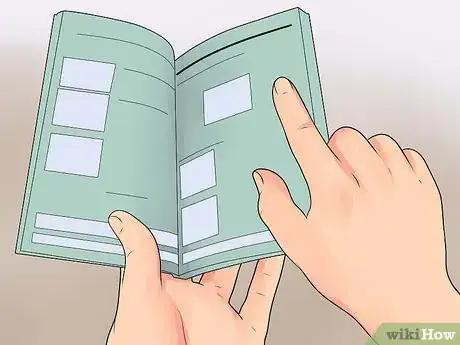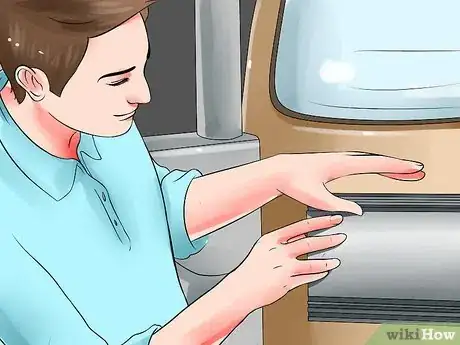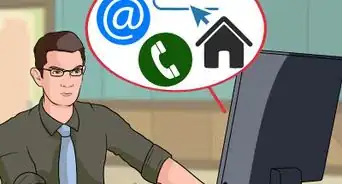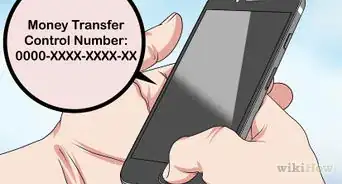wikiHow is a “wiki,” similar to Wikipedia, which means that many of our articles are co-written by multiple authors. To create this article, 27 people, some anonymous, worked to edit and improve it over time.
wikiHow marks an article as reader-approved once it receives enough positive feedback. In this case, 88% of readers who voted found the article helpful, earning it our reader-approved status.
This article has been viewed 141,160 times.
Learn more...
Making an educational video can be a great teaching tool or simply a fun way to share your knowledge with the world. With the easy accessibility and rampant popularity of sites like YouTube (which has over 1.8 billion users)[1] , educational videos are a great way to teach others about what you know.[2] Drawing upon sight and sound, an educational video is particularly appealing for auditory and visual learners. Whether you want to reach an audience of millions or an elementary school classroom, educational videos convey information in a powerful and vibrant way.
Steps
Gathering the Technology
-
1Determine the equipment you will need for filming. Do you want to film your educational video on a smart phone or digital camera, or would you rather use a more high-tech camcorder and include a microphone? Considering what you need to make your video before you start will ensure that the creation of the video is as smooth as can be.
- Pay attention to lighting. Proper lighting is important, so consider filming in a location with good natural lighting during the daytime, or consider bringing your own lights to your filming location so your educational video will have a bright feel.
- Locate a decent microphone. A good microphone will help your message come through loud and clear on your educational video. Even a small microphone can improve the quality of your video immensely.
- Consider the goals of your video. Are you making this video to be shown at a professional workshop or in a classroom? If so, you may want to invest in a higher-quality camcorder for more professional recording. However, if you are making this video for fun, you may be more comfortable filming on a piece of equipment you already have such as a tablet or smart phone.
-
2Become comfortable with a video editing tool. After you film your video, you will likely want to make some edits. A tool such as Windows Movie Maker (for a PC) or iMovie (for a Mac) can be very helpful for editing your finished educational video. This software will allow you to import and edit videos, add and edit audio, and share your movie online.
- Consider using additional technical aids to add in interesting features. Tools such as Go!Animate (which allows you to create cartoons), Google Story Builder (which allows you to create mini-movies and video stories), and Stupeflix (which will animate pictures and videos into a slide show) can make your homemade educational video look professional.
Advertisement -
3Visit a site like YouTube. Find a site where you want to upload your educational video for the world to see. YouTube is a great option in that it has the best tools for working with your videos and allows you to embed or share videos with ease.[3] Many people choose to upload their educational videos to YouTube.
- Watch other educational videos. Before you create your own video, it may be helpful to review some other videos to find out what to do and what not to do.
Producing the Video
-
1Choose a filming location. An optimal location for filming will be a place where you feel comfortable and can set up the necessary equipment to film your educational video. Additionally, you will want a place where surrounding noise is at a minimum, as this will can interfere with your video.
- Visit the location before you start filming if possible. Pay attention to the noise level at different times of the day, and pick your desired backdrop to film your video.
-
2Recruit someone to tape you if possible. While you can make an educational video by yourself, it can help to have someone working the camera so you can focus on the content that you want to convey. In addition, your cameraman can give you instantaneous feedback and can pay attention to things such as lighting and sound.
-
3Dress to impress. As you are making an educational video, you will want your audience to feel like you are an expert on the subject, even if you aren’t!
- Dress appropriately for your video topic. If you are talking about preparing for an interview, you may want to dress like you would for an interview; however, if you are explaining how to fix an oil leak on a car, you will likely want to be in different clothing.
-
4Keep your video concise. Research has shown that the average attention span lasts anywhere from 7 – 15 minutes. Remember this when making your video, and try to make your video as concise as possible while still getting your message across.
-
5Upload your video to your computer. After you’ve shot the necessary footage, you should upload the video on your computer for editing.
- Make sure you save your raw footage as a separate document so that you can edit it and make changes in the future.
-
6Post your video. Publish your video to a site like YouTube where it will reach a broad audience. It may even go viral!
- Check out wikiHow’s page on editing videos for YouTube as a great starting point.
- Consider using the “YouTube for Creators” page on the YouTube site. This site will help you build your video production skills, understand your audience, and improve your YouTube channel.[4]
-
7Request comments and suggestions from viewers. Your audience will be a great source of feedback for your video. Pay attention to how many “likes” and “dislikes” your video receives, and look for any constructive comments that may be posted.
- Ignore negative or rude commentary. Don’t pay attention to any personal attacks or criticism that isn’t constructive!
-
8Review your analytics. YouTube, for example, allows you to see who is watching your video, for how long they are watching your video, the ages and locations of people who are watching your video, and other helpful statistics.[5] This can help you understand the demographics of the people you are reaching with your educational video.
Preparing the Content
-
1Identify your topic of interest. Pick something that you know best, or learn about something new and tell the world what you have learned.
- Determine what kind of educational video you want to make:
- Will this be a “how-to” video, or will you be providing in-depth information on a particular topic?
- Will there be interactive activities, or will you be talking throughout the video?
- Make an outline of how you want your video to proceed before you start filming.
- Determine what kind of educational video you want to make:
-
2Know what already exists and how to make your video unique. A quick YouTube or Google search of your topic can help you determine what kind of videos already exist on the subject matter.
- Do not be deterred by the existence of a similar video. Many people will watch multiple videos to learn something new.
- Figure out how to make your video stand out from the rest. Identify anything that you may want to know that is not included in any other video, and make sure you include it in your own.
-
3Prepare a script. Adequate preparation for your educational video is key. Many people (especially those who are camera-shy) are more comfortable speaking in front of a camera once they have rehearsed what they want to say.
- Make sure you have your facts correct. Before making an educational video, double-check to make sure that the information you will be providing is correct. You don’t know how many people will watch this video!
-
4Practice your script. The key to creating an educational video in which you seem like an expert is to be confidence in your message. The best way to gain this confidence is through repetition.
- Practice in front of a mirror. Doing a run-through of your script with no one around to judge it can be a good way to iron out kinks and gain confidence.
- Practice with a friend, and have her give you feedback. It may be beneficial to have another person listen to your script before you film it and publish it.
- If possible, practice speaking from memory without the assistance of notes.
-
5Get any props you may need. Think about the message you are trying to convey, and locate any props that will make this message clearer and your video more stimulating.
- Watch other educational videos to see if and how they effectively use props. While it is important not to directly copy any other video, you may be inspired by what you see on other videos.
- Remember that a prop can be as simple or as complex as you want it to be. There are no specific guidelines to creating your own educational video! The props that you use in your video will be unique to the topic you are presenting.
-
6Do a dress rehearsal. Remember that speaking in front of a camera can feel a lot different from speaking in front of your mirror. The more practice you can get, the better your video will be.
- Film your dress rehearsal if possible. This will allow you to watch it over, review your performance, and identify any mistakes you may have made.
- Ask a trusted friend to watch your video and provide critiques. A neutral third party may be able to better identify errors or potential distractions in your video.
Community Q&A
-
QuestionWhat should I do if I am on a budget and want to get all of the materials on here?
 Ash LeyCommunity AnswerYou should try to save money until you have the money required to buy all the equipment. If not, see if someone will help you buy the items.
Ash LeyCommunity AnswerYou should try to save money until you have the money required to buy all the equipment. If not, see if someone will help you buy the items. -
QuestionWhat is the most suitable app for editing my videos clearly?
 AbigailMillerCommunity AnswerOpenshot: This is award-winning open-source video editing software. You can use it to add titles, remove the background from your video, invert the colors, adjust brightness, and more. Shotcut: A free, and open-source video editor which enables you to edit your videos conveniently and easily.
AbigailMillerCommunity AnswerOpenshot: This is award-winning open-source video editing software. You can use it to add titles, remove the background from your video, invert the colors, adjust brightness, and more. Shotcut: A free, and open-source video editor which enables you to edit your videos conveniently and easily.
References
- ↑ https://www.businessinsider.com/youtube-user-statistics-2018-5
- ↑ https://www.youtube.com/yt/press/statistics.html
- ↑ http://www.speedofcreativity.org/2012/03/09/creating-educational-videos-for-youtube-by-marty-brandl-swwc2012/
- ↑ https://www.youtube.com/yt/creators/?noapp=1
- ↑ http://www.speedofcreativity.org/2012/03/09/creating-educational-videos-for-youtube-by-marty-brandl-swwc2012/
About This Article
To make an educational video, start by deciding on a topic and writing a script. Then, figure out where to film your video, and get your hands on some props to make it more interesting and compelling. When you have everything together, conduct dress rehearsals to go through the script. Once you're happy with a run-through, film your video, making sure to keep it between 7 to 15 minutes, since that's the average attention span. Finally, upload the video to your computer, then post it online. For tips on how to choose the best filming equipment and editing software for your educational video, scroll down!


